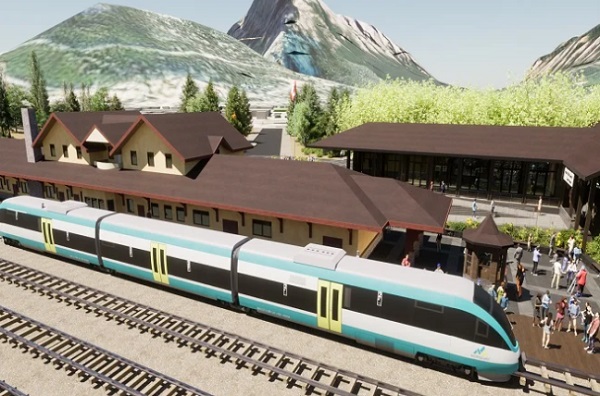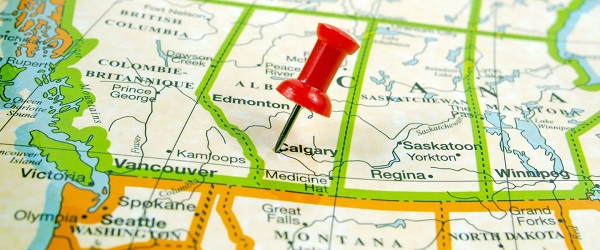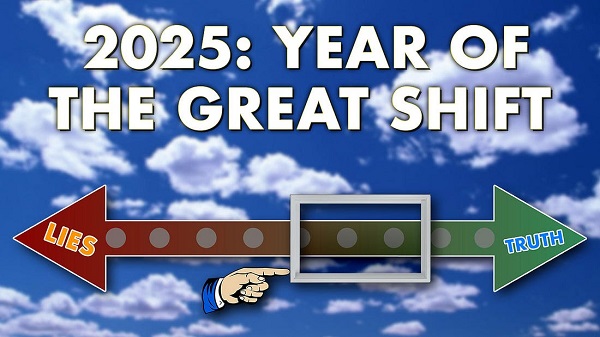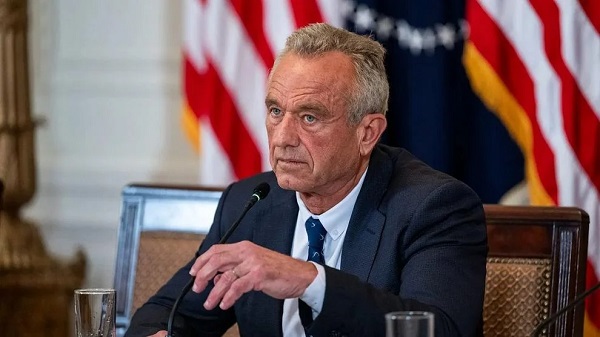Alberta
Alberta’s vision for passenger rail

Alberta’s government will develop a Passenger Rail Master Plan as the foundation to advancing passenger rail in the province.
Since the early days of Alberta’s development, the province has been shaped by the iron rails that crisscross its landscape. The arrival of the transcontinental railway in the late 19th century brought about profound changes to the way of life, facilitating trade, settlement, and economic prosperity. Towns and cities sprung up along the tracks, serving as vital hubs for commerce and transportation.
Today, the legacy of rail continues to shape Alberta and the rest of Canada. While the modes of transportation may have evolved, the spirit of innovation and connectivity remains as strong as ever. As Alberta experiences record population growth and evolving transportation needs, advancing passenger rail infrastructure is essential for enhancing accessibility, efficiency, and connectivity across the province.
Alberta’s Passenger Rail Master Plan will look forward decades and identify concrete actions that can be taken now as well as in the future to build the optimal passenger rail system for the province. The Master Plan will assess the feasibility of passenger rail in the province, including regional (inter-city), commuter and high-speed services.
“A large and efficient passenger rail network stretching across the province has incredible potential. It represents a forward-looking vision and is a mobility solution for our rapidly growing province and I’m excited to watch this plan take shape and bring us into the future. There’s a lot of work ahead of us, but I’m confident that we will build the network Albertans need to improve daily life and work, boost the economy and take away the stress of long-distance travel.”
“Alberta already has significant public mass transit systems in Calgary and Edmonton for the provincial passenger rail system to build upon. The Master Plan will be a vital tool to guide the province on the next steps in advancing passenger rail. It will provide certainty to the rail sector and ensure the most effective use of tax dollars and government authorities. We look forward to hearing from Albertans and working with municipalities, Indigenous communities and the private sector in advancing passenger rail in the province.”
Passenger rail services connected to urban mass transit shapes and strengthens regional transportation systems, connects communities, supports jobs and the economy and improves access to housing.
“Canada’s railways appreciate the Alberta government’s efforts to conduct a fact-based study on the potential for passenger rail service that recognizes the essential need to protect current and future freight rail capacity. Any proposal to co-locate passenger service in freight corridors must demonstrate the ability to preserve the freight rail capacity required to move goods in support of the province’s economy, today and tomorrow. Rail is the greenest mode of ground transportation for both people and goods.”
The government’s vision is for an Alberta passenger rail system that includes public, private or hybrid passenger rail, including:
- a commuter rail system for the Calgary area that connects surrounding communities and the Calgary International Airport to downtown;
- a commuter rail system for the Edmonton area that connects surrounding communities and the Edmonton International Airport to downtown;
- regional rail lines from Calgary and Edmonton to the Rocky Mountain parks;
- a regional rail line between Calgary and Edmonton, with a local transit hub in Red Deer;
- municipal-led LRT systems in Calgary and Edmonton that integrate with the provincial passenger rail system; and
- rail hubs serving the major cities that would provide linkages between a commuter rail system, regional rail routes and municipal-led mass transit systems.
The vision includes a province-led “Metrolinx-like” Crown corporation with a mandate to develop the infrastructure and oversee daily operations, fare collection/booking systems, system maintenance, and planning for future system expansion.
“At VIA Rail our vision for integrated mobility means dreaming of a future where a passenger can easily switch between commuter rail, light transit, transit buses, and regional trains in an agile and simple way. We’ve already initiated a number of exchanges with partners, and we intend to step up the pace in the coming months and years. I can assure you that as integrated mobility becomes an increasingly important topic of conversation in Alberta, VIA Rail will be there to play a unifying role.”
Alberta’s Passenger Rail Master Plan will ensure government has the required information to make decisions based on where passenger rail delivers the best return on investment. The plan will provide a cost-benefit analysis and define what is required by government, including a governance and delivery model, legislation, funding, and staging to implement passenger rail in Alberta. This work will include a 15-year delivery plan that will prioritize and sequence investments.
“We are excited to see the province taking the next step in committing to regional and intercity rail. This Passenger Rail Master Plan aims to set out a vision for a comprehensive rail network in our province that’s long overdue. We are thrilled to see this process move forward.”
The Master Plan will take into account future growth, planning for the growing provincial population and considering the use of hydrogen-powered trains to ensure a robust and effective passenger rail system to serve Albertans for years to come.
Development of the Master Plan will include engagement with Albertans to gain their perspectives for the future of passenger rail in Alberta.
Alberta’s government has released a Request for Expression of Interest to seek world-class knowledge and consultant services as a first step toward the development of the Passenger Rail Master Plan for Alberta. Following this process, a Request for Proposal will be issued to select a consultant to develop the Passenger Rail Master Plan. The Master Plan is expected to be completed by summer 2025.
Quick facts
- Passenger rail includes:
- Commuter rail – passenger rail that primarily operates within a metropolitan area, connecting commuters to a central city from adjacent suburbs or surrounding commuter towns, and is often traditional heavy-rail
- Regional rail – passenger rail that operates beyond the limits of urban areas and provides inter-city passenger rail transport services and can be traditional heavy-rail or high-speed rail
- Light-rail transit (LRT) – urban passenger rail transit that typically operates small, frequent train service in an urban area. Calgary and Edmonton use LRT as part of their mass transit systems
- Passenger rail in Alberta is currently limited to two tourism-focused services, VIA Rail and Rocky Mountaineer, and LRT in Calgary and Edmonton.
- Budget 2024 includes $9 million to support the development of the Passenger Rail Master Plan this year.
Alberta
Alberta Next Panel calls to reform how Canada works

From the Fraser Institute
By Tegan Hill
The Alberta Next Panel, tasked with advising the Smith government on how the province can better protect its interests and defend its economy, has officially released its report. Two of its key recommendations—to hold a referendum on Alberta leaving the Canada Pension Plan, and to create a commission to review programs like equalization—could lead to meaningful changes to Canada’s system of fiscal federalism (i.e. the financial relationship between Ottawa and the provinces).
The panel stemmed from a growing sense of unfairness in Alberta. From 2007 to 2022, Albertans’ net contribution to federal finances (total federal taxes paid by Albertans minus federal money spent or transferred to Albertans) was $244.6 billion—more than five times the net contribution from British Columbians or Ontarians (the only other two net contributors). This money from Albertans helps keep taxes lower and fund government services in other provinces. Yet Ottawa continues to impose federal regulations, which disproportionately and negatively impact Alberta’s energy industry.
Albertans were growing tired of this unbalanced relationship. According to a poll by the Angus Reid Institute, nearly half of Albertans believe they get a “raw deal”—that is, they give more than they get—being part of Canada. The Alberta Next Panel survey found that 59 per cent of Albertans believe the federal transfer and equalization system is unfair to Alberta. And a ThinkHQ survey found that more than seven in 10 Albertans feel that federal policies over the past several years hurt their quality of life.
As part of an effort to increase provincial autonomy, amid these frustrations, the panel recommends the Alberta government hold a referendum on leaving the Canada Pension Plan (CPP) and establishing its own provincial pension plan.
Albertans typically have higher average incomes and a younger population than the rest of the country, which means they could pay a lower contribution rate under a provincial pension plan while receiving the same level of benefits as the CPP. (These demographic and economic factors are also why Albertans currently make such a large net contribution to the CPP).
The savings from paying a lower contribution rate could result in materially higher income during retirement for Albertans if they’re invested in a private account. One report found that if a typical Albertan invested the savings from paying a lower contribution rate to a provincial pension plan, they could benefit from $189,773 (pre-tax) in additional retirement income.
Clearly, Albertans could see a financial benefit from leaving the CPP, but there are many factors to consider. The government plans to present a detailed report including how the funds would be managed, contribution rates, and implementation plan prior to a referendum.
Then there’s equalization—a program fraught with flaws. The goal of equalization is to ensure provinces can provide reasonably comparable public services at reasonably comparable tax rates. Ottawa collects taxes from Canadians across the country and then redistributes that money to “have not” provinces. In 2026/27, equalization payments is expected to total $27.2 billion with all provinces except Alberta, British Columbia and Saskatchewan receiving payments.
Reasonable people can disagree on whether or not they support the principle of the program, but again, it has major flaws that just don’t make sense. Consider the fixed growth rate rule, which mandates that total equalization payments grow each year even when the income differences between recipient and non-recipient provinces narrows. That means Albertans continue paying for a growing program, even when such growth isn’t required to meet the program’s stated objective. The panel recommends that Alberta take a leading role in working with other provinces and the federal government to reform equalization and set up a new Canada Fiscal Commission to review fiscal federalism more broadly.
The Alberta Next Panel is calling for changes to fiscal federalism. Reforms to equalization are clearly needed—and it’s worth exploring the potential of an Alberta pension plan. Indeed, both of these changes could deliver benefits.
Alberta
Alberta’s new diagnostic policy appears to meet standard for Canada Health Act compliance

From the Fraser Institute
By Nadeem Esmail, Mackenzie Moir and Lauren Asaad
In October, Alberta’s provincial government announced forthcoming legislative changes that will allow patients to pay out-of-pocket for any diagnostic test they want, and without a physician referral. The policy, according to the Smith government, is designed to help improve the availability of preventative care and increase testing capacity by attracting additional private sector investment in diagnostic technology and facilities.
Unsurprisingly, the policy has attracted Ottawa’s attention, with discussions now taking place around the details of the proposed changes and whether this proposal is deemed to be in line with the Canada Health Act (CHA) and the federal government’s interpretations. A determination that it is not, will have both political consequences by being labeled “non-compliant” and financial consequences for the province through reductions to its Canada Health Transfer (CHT) in coming years.
This raises an interesting question: While the ultimate decision rests with Ottawa, does the Smith government’s new policy comply with the literal text of the CHA and the revised rules released in written federal interpretations?
According to the CHA, when a patient pays out of pocket for a medically necessary and insured physician or hospital (including diagnostic procedures) service, the federal health minister shall reduce the CHT on a dollar-for-dollar basis matching the amount charged to patients. In 2018, Ottawa introduced the Diagnostic Services Policy (DSP), which clarified that the insured status of a diagnostic service does not change when it’s offered inside a private clinic as opposed to a hospital. As a result, any levying of patient charges for medically necessary diagnostic tests are considered a violation of the CHA.
Ottawa has been no slouch in wielding this new policy, deducting some $76.5 million from transfers to seven provinces in 2023 and another $72.4 million in 2024. Deductions for Alberta, based on Health Canada’s estimates of patient charges, totaled some $34 million over those two years.
Alberta has been paid back some of those dollars under the new Reimbursement Program introduced in 2018, which created a pathway for provinces to be paid back some or all of the transfers previously withheld on a dollar-for-dollar basis by Ottawa for CHA infractions. The Reimbursement Program requires provinces to resolve the circumstances which led to patient charges for medically necessary services, including filing a Reimbursement Action Plan for doing so developed in concert with Health Canada. In total, Alberta was reimbursed $20.5 million after Health Canada determined the provincial government had “successfully” implemented elements of its approved plan.
Perhaps in response to the risk of further deductions, or taking a lesson from the Reimbursement Action Plan accepted by Health Canada, the province has gone out of its way to make clear that these new privately funded scans will be self-referred, that any patient paying for tests privately will be reimbursed if that test reveals a serious or life-threatening condition, and that physician referred tests will continue to be provided within the public system and be given priority in both public and private facilities.
Indeed, the provincial government has stated they do not expect to lose additional federal health care transfers under this new policy, based on their success in arguing back previous deductions.
This is where language matters: Health Canada in their latest CHA annual report specifically states the “medical necessity” of any diagnostic test is “determined when a patient receives a referral or requisition from a medical practitioner.” According to the logic of Ottawa’s own stated policy, an unreferred test should, in theory, be no longer considered one that is medically necessary or needs to be insured and thus could be paid for privately.
It would appear then that allowing private purchase of services not referred by physicians does pass the written standard for CHA compliance, including compliance with the latest federal interpretation for diagnostic services.
But of course, there is no actual certainty here. The federal government of the day maintains sole and final authority for interpretation of the CHA and is free to revise and adjust interpretations at any time it sees fit in response to provincial health policy innovations. So while the letter of the CHA appears to have been met, there is still a very real possibility that Alberta will be found to have violated the Act and its interpretations regardless.
In the end, no one really knows with any certainty if a policy change will be deemed by Ottawa to run afoul of the CHA. On the one hand, the provincial government seems to have set the rules around private purchase deliberately and narrowly to avoid a clear violation of federal requirements as they are currently written. On the other hand, Health Canada’s attention has been aroused and they are now “engaging” with officials from Alberta to “better understand” the new policy, leaving open the possibility that the rules of the game may change once again. And even then, a decision that the policy is permissible today is not permanent and can be reversed by the federal government tomorrow if its interpretive whims shift again.
The sad reality of the provincial-federal health-care relationship in Canada is that it has no fixed rules. Indeed, it may be pointless to ask whether a policy will be CHA compliant before Ottawa decides whether or not it is. But it can be said, at least for now, that the Smith government’s new privately paid diagnostic testing policy appears to have met the currently written standard for CHA compliance.

Lauren Asaad
Policy Analyst, Fraser Institute
-

 Health2 days ago
Health2 days agoFDA warns ‘breast binder’ manufacturers to stop marketing to gender-confused girls
-

 Uncategorized20 hours ago
Uncategorized20 hours agoMortgaging Canada’s energy future — the hidden costs of the Carney-Smith pipeline deal
-

 Agriculture2 days ago
Agriculture2 days agoSupply Management Is Making Your Christmas Dinner More Expensive
-

 International2 days ago
International2 days ago2025: The Year The Narrative Changed
-

 Business1 day ago
Business1 day agoThere’s No Bias at CBC News, You Say? Well, OK…
-

 Health2 days ago
Health2 days agoAll 12 Vaccinated vs. Unvaccinated Studies Found the Same Thing: Unvaccinated Children Are Far Healthier
-

 Daily Caller2 days ago
Daily Caller2 days agoTrump Reportedly Escalates Pressure On Venezuela With Another Oil Tanker Seizure
-

 International21 hours ago
International21 hours agoAustralian PM booed at Bondi vigil as crowd screams “shame!”











